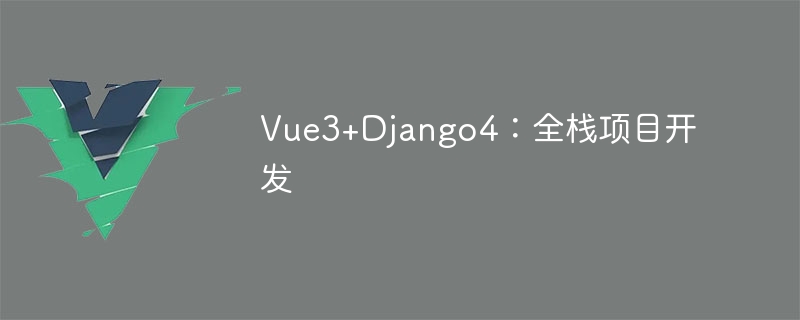

Vue3 Django4: Full-stack project development
In today's Internet development field, full-stack development has become a trend and demand. Full-stack development can improve development efficiency, reduce development costs, and maintain consistency and standardization. This article will introduce how to use Vue3 and Django4 for full-stack project development.
1. Introduction to Vue3
Vue3 is a popular JavaScript framework used to build user interfaces. It uses a componentized approach to build applications, allowing developers to develop complex front-end applications more efficiently.
Vue3 has many improvements and optimizations compared to Vue2. The most obvious improvement is the introduction of a new compiler, which gives Vue3 faster rendering performance. In addition, Vue3 also introduces some new syntax and features to make the development process more concise and streamlined.
2. Introduction to Django4
Django4 is a popular Python web framework for building powerful and scalable back-end applications. It follows the MVC (Model-View-Controller) design pattern, allowing developers to develop back-end applications more efficiently.
Django4 has many improvements and optimizations compared to Django3. The most important improvement is the introduction of new asynchronous features, allowing Django 4 to better handle high concurrency situations. In addition, Django4 also introduces some new APIs and features to make the development process easier and more comfortable.
3. Combination of Vue3 and Django4
The combination of Vue3 and Django4 can achieve full-stack project development. Vue3 is responsible for building the front-end interface and interacting with the back-end through HTTP requests. Django4 is responsible for building back-end business logic, processing requests and returning responses.
When using Vue3 Django4 for full-stack project development, you can follow the following steps:
Through the above steps, we can use Vue3 Django4 for full-stack project development. Vue3 is responsible for building a beautiful front-end interface, and Django4 is responsible for handling the back-end business logic. The combination of Vue3 and Django4 can achieve front-end and back-end separation, improving development efficiency and user experience.
Summary:
Vue3 and Django4 are a very powerful and popular full-stack development combination that can be used to build various types of web applications. Using Vue3 Django4 for full-stack project development can provide better development efficiency and user experience. I hope this article will be helpful to you in full-stack development!
The above is the detailed content of Vue3+Django4: full stack project development. For more information, please follow other related articles on the PHP Chinese website!